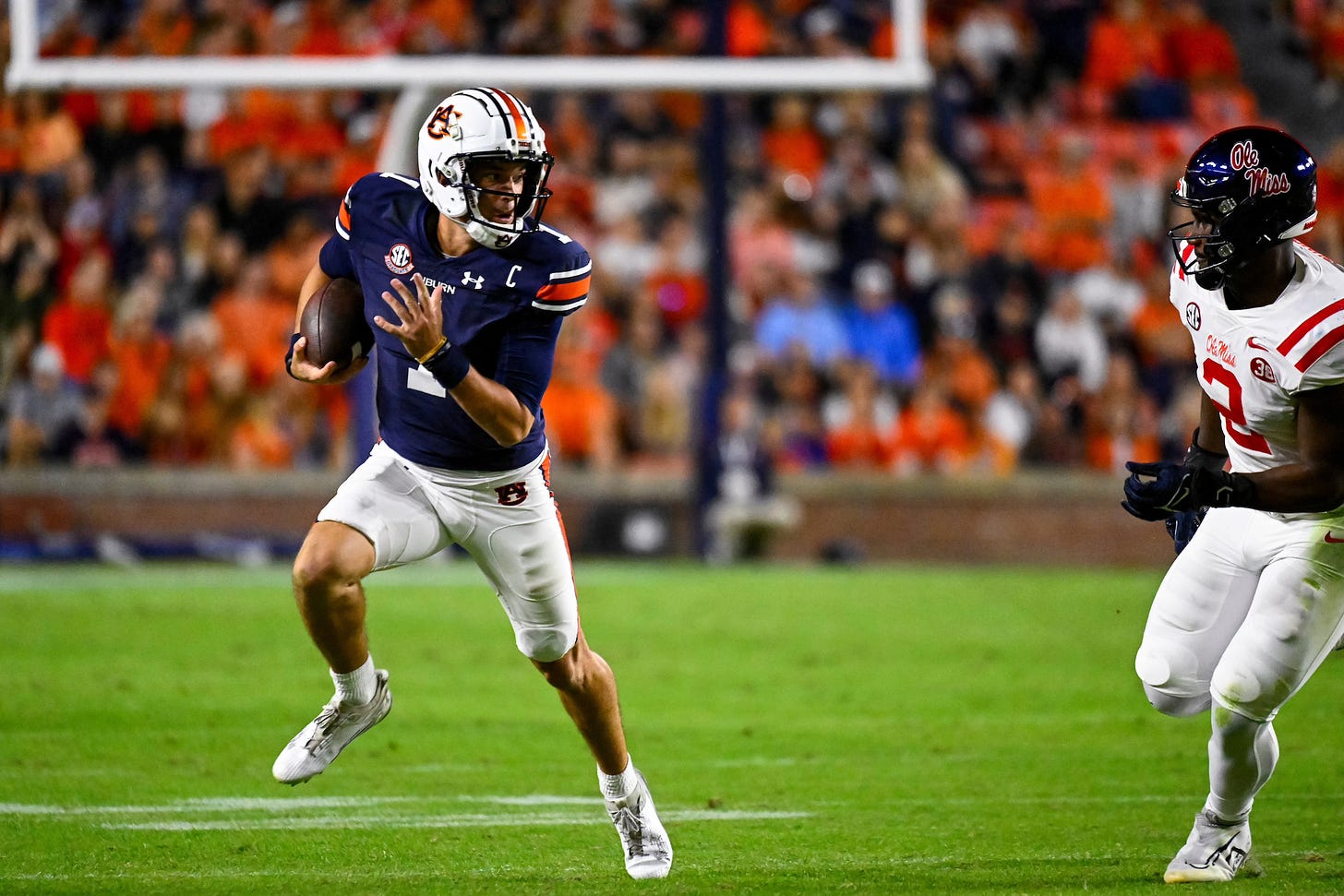No efficiency, no explosiveness, no identity
So far this season, Auburn's offense has been unable to keep drives alive or create big plays. And there don't seem to be any answers.
QB Payton Thorne (Jamie Holt/Auburn Tigers)
Few sports statistics have been as revolutionary in their time as OPS was for baseball.
(Yes, this is a weird way to start a story about Auburn football’s offense.)
OPS combined on-base percentage and slugging percentage. Essentially, it measures how efficient and explosive players can be with their opportunities at the plate. You can hit for average but not get extra bases, or you can hit for power and have a higher rate of not reaching base. Players who are elite in OPS max out the sweet spot between the two and are among the most valuable players in the sport.
More than a decade ago, ESPN’s Bill Connelly wanted to create an OPS-like stat for college football. He came up with S&P+, which was a measurement of success rate (efficiency) and points per play (explosiveness).
Now called SP+, Connelly’s stats have gone through a number of changes over the years, bringing in more play-by-play and opponent data, plus weighing factors such as field position, finishing drives and turnover luck. (This is similar to how baseball has evolved to use stats like OPS+ and wOBA.)
But the core of SP+ remains those two key measurements: Efficiency and explosiveness. Historically, teams that win the efficiency battle in a game win 83% of the time. Teams that win the explosiveness battle win 86% of the time.
If you want to be a good offense in college football, you need both. Boom-or-bust offenses have a tendency to struggle over the course of a long season. And, while it’s good to keep the ball moving and avoid negative plays, the numbers show that the best of the best are the ones who can get big yards in chunks.
Like in baseball, the elite offenses are the ones that can do both at a high level.
This is the two-fold problem Auburn’s offense faces a little more than halfway through the 2023 season: It is not efficient, and it is not explosive.
That’s a double whammy that has doomed the Tigers to a four-game SEC losing streak — and a spot among the very worst attacks in the entire country.
When Hugh Freeze stands behind a podium and says that Auburn has a “combination” of issues on offense, he’s right.
The Tigers haven’t proven that they can move the ball efficiently or explosively, and the result is an offense with no real identity seven games into the season. One of the big reasons why Freeze was hired was to fix Auburn’s struggling offense, and it’s actually gotten worse in 2023.
Auburn put up some decent offensive numbers in Week 1 and Week 3 against UMass (currently 1-7) and Samford (currently 4-4 in FCS). But that doesn’t matter much for an SEC team.
Instead, let’s look at the five Power 5 games Auburn has played this season: Cal, Texas A&M, Georgia, LSU and Ole Miss.
In those games, Auburn has averaged just 4.36 yards per play. That’s the seventh-lowest mark among Power 5 teams. Auburn has also averaged 16.6 points per game against Power 5 opponents, which is also the seventh-lowest mark in the P5.
The rushing attack, averaging 4.06 yards per carry against Power 5 opponents, is in the middle of the road nationally. The passing attack, however, is at 4.9 yards per attempt — tied with Minnesota for the second-worst among Power 5 teams and only ahead of Iowa.
Those numbers are bad enough. But a deeper dive into the Tigers’ drive charts from these five Power 5 games shows just how much they’ve struggle to move the ball with either efficiency or explosiveness.
Brace yourselves, Auburn fans.


